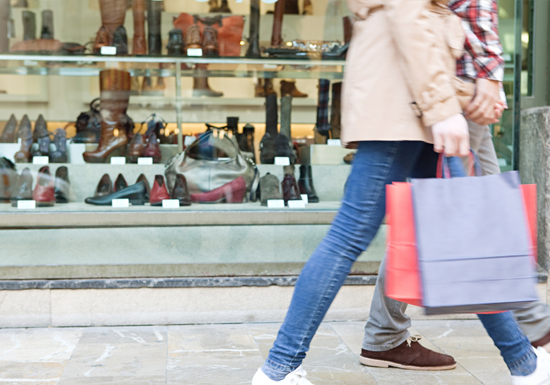
Gallup’s new research threw a bit of a wet blanket on prior reports that consumers were feeling all warm and fuzzy about their economic prospects and warming up for a pre-summer spending spree. Adding insult to injury, it turns out that mobile is doing a great job at influencing in store shopping, but probably not motivating those consumers with lots of money to spend. What are the implications to payments and commerce innovators?
By Jeffrey Green (@epaymentsguy)
Average daily spending among Americans in April rose slightly, to $88, up from $87 the previous two months, ranking among the best averages for April since Gallup began evaluating consumer spending in January 2008, the polling company announced May 5. Previous best Aprils for average consumer daily spending were last April and April 2008, when spending averaged $86.
The findings from a separate Gallup survey out last week suggest mobile is beginning to affect consumer spending in retail stores.
For the May 5 consumer spending report, Gallup conducted telephone interviews between April 1 and 30 with a random sample of 14,703 adults, ages 18 and older, living in all 50 U.S. states and the District of Columbia. During the poll, participants were asked what they spent “yesterday.” Results based on the total sample of national adults have a margin of sampling error is +/- 1 percentage point at the 95% confidence level, according to Gallup.
While the $88 average remains on the high end of Gallup’s historic measures, it also represents little to no growth from the previous two months, or from a year earlier. “The lack of growth in consumer spending is a concern for the U.S. economy, especially considering the effect the extreme weather in many parts of the country may have had on spending during the winter months,” Gallup said in releasing the results. “Perhaps more telling for the economy will be the trajectory of spending in the coming months. May and June spending estimates have usually outpaced April estimates.”
Meanwhile, mobile technology is having no effect on spending in retail stores for more than half of Americans, but online and smartphone shopping still present a threat to traditional brick-and-mortar merchants, Gallup noted in findings of separate research released on May 1.
Today, however, the impact of mobile technology on retail shopping is mixed, Gallup found. Whereas 19 percent of respondents to a Gallup poll conducted March 21 to 23 said mobile had decreased their in-person retail shopping, 22 percent said it actually had increased the amount of shopping they do in stores.
Gallup based the results of those findings on telephone interviews it conducted with a random sample of 1,505 adults, ages 18 and older, living in all 50 U.S. states and the District of Columbia. The margin of sampling error is +/- 3 percentage points at the 95% confidence level, Gallup said.
Posing a challenge to retailers are Internet sellers that often can offer the same product at cheaper prices because of lower overhead costs. Many retailers have responded allowing customers to pick up items they buy online at the store. “At this point, with roughly seven in 10 Americans using some form of mobile technology, the effects of mobile technology on in-store retail shopping seem to balance each other out, at least based on consumers’ self-reports,” Gallup said.
Separate research from eMarketer suggests that, while consumers are not always shopping online, they constantly are shopping using digital channels. It expects that, of the 219.4 million U.S. Internet users ages 14 and older, 196.6 million, or 90 percent, will shop online this year, compared with 163.2 million who will complete the purchase digitally.
As such, more retailers now are more focused on securing an omnichannel presence as they look to participate in consumers’ purchase decision-making from start to finish. And merchants who don’t properly understand and take advantage of how their customers pay online via smartphones, tablets or home computers might not be getting the full picture of what leads to their purchases, and the result may be millions in lost revenue, according to another study, “The New Digital Divide,” from Deloitte Digital.
Age appears to affect where consumers might end up making their purchase, Gallup found. Respondents to its March survey who were ages 18 to 29 were nearly twice as likely, at 29 percent, to say mobile technology has led to an increase in them shopping at stores rather than a decrease, at 15% percent. The percentages between the two options were virtually the same for all other age groups.
“The exact reason for younger adults doing more in-person shopping is not clear, but one factor may be that Gallup has found 18- to 29-year-olds are much less likely than older adults to have credit cards, which would limit their ability to shop online,” Gallup said, adding, too, that many consumers generally also prefer “to interact with the product itself before purchasing,” plus they get immediate gratification from the purchase.